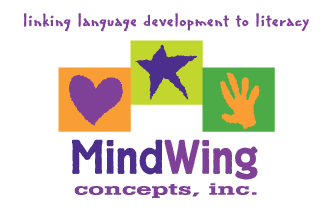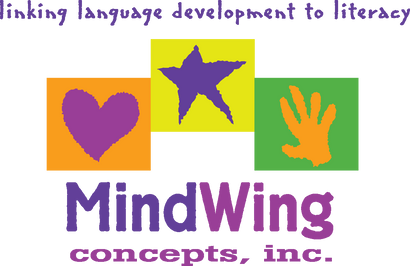Menu
-
- Home
-
About Us
-
The Approach
-
Linking Language & Literacy
-
MindWing Learning
-
Learning Resources
-
SHOP
-
Blog
-
- About MindWing
- Our People
- Contact Us
- Your Account
- Login
-
Spain (EUR €)

Fireflies! Story Structure, Thoughts & Feelings, Expository Features and Artwork!
July 10, 2017 5 min read
 I recently came across a book, Fireflies! written and illustrated by Jule Brinkloe, that I had used to demonstrate the concept of two episodes in a story: the first episode leading to a new Kick-Off, creating a second episode. Told in the first person, the beautiful pencil drawings compliment and enhance the story of a young boy learning a valuable lesson of letting go and doing the right thing.
I recently came across a book, Fireflies! written and illustrated by Jule Brinkloe, that I had used to demonstrate the concept of two episodes in a story: the first episode leading to a new Kick-Off, creating a second episode. Told in the first person, the beautiful pencil drawings compliment and enhance the story of a young boy learning a valuable lesson of letting go and doing the right thing.
The following is the book analyzed in two episodes.
- Character: Boy
- Setting: House, yard, dusk on a summer evening
- Kick-Off: Looks out window while eating and sees fireflies
- Internal Response: Excited
- Plan: To catch fireflies
- Action: Got a jar ready (opportunity to discuss holding of scissors)
- Action: Caught hundreds of fireflies in his jar
- Action: Called into back to the house at dark and returns with his jar of fireflies
- Action: Places jar by his bedside
- Direct Consequence: Watches the (refers to them as “my”) fireflies light up the jar
- Resolution: Content, proud
- Character: Boy
- Setting: House, bedroom, same night
- Kick-Off: Watches the fireflies in the jar in the darkness of his room
- Internal Response: Upset (could not swallow), concerned, worried, (tries to hide under pillow), conflicted (“my fireflies”). (One could introduce the feeling of being conflicted and the idiom “in a quandary” at this time.)
- Plan: Decides to let the fireflies live, be free
- Action: Flings off covers
- Action: Opens the jar and aims at the stars
- Action: Opens the window
- Action: Opens the jar and aims at the stars
- Action: “Fly!”
- Direct Consequence: Jar glows (like stars dancing!); releases the fireflies!
- Resolution: Although sad to have let them go, also glad; pleased with himself for making the decision. (Sentence: “The moonlight and the fireflies swam in my tears, but I could feel myself smiling.”) We infer that he knows he did the right thing by letting the fireflies free. (Here would also be a perfect place for an extension lesson to discuss how we may have multiple feelings for one event using the book Double Dip Feelings by Barbara S. Cain.)
Mapping this out with students using the book and then reviewing and modeling the retelling with the SGM marker is a clear, powerful visual for showing the two episodes. I liked to use chart paper, one for each episode as the visual of two distinct episodes is even clearer. (You may be interested in using the idea from our blog DIY SGM Icon Stickers for Reinforcing in your small groups to further cement the relationship of the icons making up the episodes).
 In addition, the Kick-Off of the second episode is an excellent opportunity to model using the Critical Thinking Triangle® in Action! to develop inference skills. After the above activity, the next day, reread pages 20 to 28 with the children in your group. Then, going page by page, use the Critical Thinking Triangle® as shown below to go through the thinking and feelings of the boy as he comes to the decision that he must free the fireflies.
In addition, the Kick-Off of the second episode is an excellent opportunity to model using the Critical Thinking Triangle® in Action! to develop inference skills. After the above activity, the next day, reread pages 20 to 28 with the children in your group. Then, going page by page, use the Critical Thinking Triangle® as shown below to go through the thinking and feelings of the boy as he comes to the decision that he must free the fireflies.
Breaking down this process for the students visually with the icons, feeling words, and thought bubbles found in the Critical Thinking Triangle in Action! Set is a strong tool. Just talking about the events…or that the character felt sad/happy…does not explore the depth of the boy’s thinking in the decision making process.
This is a skill that is so necessary for students: to see things in depth from another person’s perspective—important not only for academic success but for life skills as well.
Materials Used from The CTT in Action!® Set


Samples






 I would recommend pairing this book with an expository selection of your choosing on fireflies. I found a book in the children’s section of our local library, Fireflies by Connie Miller, which is clear and concise and contains a list of “amazing” facts about fireflies and a glossary. One activity
I would recommend pairing this book with an expository selection of your choosing on fireflies. I found a book in the children’s section of our local library, Fireflies by Connie Miller, which is clear and concise and contains a list of “amazing” facts about fireflies and a glossary. One activity  that would be engaging for your summertime lessons would be to pair students and ask them to complete an Expository “My Research” Cut and Fold Booklet found in The “Core” of The Core Manual (grade 3 and above.) See one completed below.
that would be engaging for your summertime lessons would be to pair students and ask them to complete an Expository “My Research” Cut and Fold Booklet found in The “Core” of The Core Manual (grade 3 and above.) See one completed below.
Our blog Expository “My Research” Cut–and-Fold Booklet shows another example using the booklet with the topic of Sea Turtles.


After the booklets are completed have students share and compare their works.
For younger students and just for fun:
Included at right as a download is a simple cut-out firefly “character” which children can color (a fluorescent yellow crayon would be great!), cut, and put on the end of a popsicle stick. If you want, have each child write one fact on the back of his/her firefly that the student has learned from the expository selection.
And, optionally, use this with the action poem below:
Firefly, firefly
Out you come at night, (fireflies fly about!)
Firefly, Firefly
I can’t see you when it’s light! (put fireflies behind backs)
Firefly, firefly
Flying high and low
(Repeat with each of the above actions)
Firefly, Firefly
Now where did you go? (behind backs)
Or: Create a simple game: “I spy a firefly!”
Each day for a week’s time, place the firefly somewhere in your classroom and at the beginning of morning meeting at the designated time, when a child sees the firefly, they can shout, “I spy a firefly!” One child could then be asked to state one fact about a firefly and retrieve the cut-out for the teacher for the next day. This game could be recreated at home with the above cut-out.
Additional Resources, Ideas
 Fireflies at Midnight by Marilyn Singer
Fireflies at Midnight by Marilyn Singer
A delightful collection of poems about animals and insects. Each animal is shown during the time of day that one might see it. Review from Goodreads
 The Lady and the Spider by Faith McNulty
The Lady and the Spider by Faith McNulty
This book is out of print but if you hunt for it, copies are easily found (check out Amazon, your class library shelves, or your local library). It is worth it. You could use it to compare/contrast to Brinkloe’s Fireflies. Review from Goodreads
 Hey, Little Ant by Hannah and Phyllis Hoose
Hey, Little Ant by Hannah and Phyllis Hoose
This is an ideal selection for a writing activity to answer the question presented at the end of the book. This is a great book for a discussion of respecting all living creatures and for perspective taking. Review from Goodreads
 A further suggestion, compliments of Maryellen: For older students, the firefly activities above would be a nice transition to a study of the formation of the Quabbin Reservoir in Massachusetts by using the book Letting Swift River Go by Jane Yolen, illustrated by Barbara Cooney. Letting Swift River Go is a personal narrative about the flooding of the Swift River Valley in Massachusetts during the 1930s to increase the water supply for a growing population in Boston. Several towns were flooded and inhabitants had to leave, houses and belongings along with them. We like this book as a model for a personal narrative: Characters in a Setting who experience events and Feelings related to these events.
A further suggestion, compliments of Maryellen: For older students, the firefly activities above would be a nice transition to a study of the formation of the Quabbin Reservoir in Massachusetts by using the book Letting Swift River Go by Jane Yolen, illustrated by Barbara Cooney. Letting Swift River Go is a personal narrative about the flooding of the Swift River Valley in Massachusetts during the 1930s to increase the water supply for a growing population in Boston. Several towns were flooded and inhabitants had to leave, houses and belongings along with them. We like this book as a model for a personal narrative: Characters in a Setting who experience events and Feelings related to these events.
 This would be an Action Sequence (story grammar stage) coupled with natural feelings which do not necessarily lead to a Plan because there may not be any event that is determined to be a Kick-Off. In this particular book, the six-year-old girl describes events within the Swift River Valley including a four-page spread related to fireflies! Mom tells the girl and her friends that they have to let them go. Interestingly, the artists’ renditions are in shades of gray and yellow. The jars referred to in both books are “Mason” jars, used for canning fruits and veggies, and made in Mason, New Hampshire. Please see our lessons related to this book, above and beyond a personal narrative.
This would be an Action Sequence (story grammar stage) coupled with natural feelings which do not necessarily lead to a Plan because there may not be any event that is determined to be a Kick-Off. In this particular book, the six-year-old girl describes events within the Swift River Valley including a four-page spread related to fireflies! Mom tells the girl and her friends that they have to let them go. Interestingly, the artists’ renditions are in shades of gray and yellow. The jars referred to in both books are “Mason” jars, used for canning fruits and veggies, and made in Mason, New Hampshire. Please see our lessons related to this book, above and beyond a personal narrative.
There are multiple sites containing information on fireflies… here are two for quick reference:
Leave a comment.
Comments will be approved before showing up.

